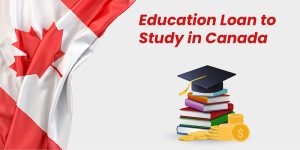Are you dreaming of pursuing your graduate studies in Canada, but worried about the financial burden? Don’t fret! We’ve got you covered. In this blog post, we will delve into the world of student loans specifically designed to fund your academic aspirations.
From understanding the loan options available to navigate through the application process, get ready to embark on a journey toward funding your dreams and unlocking a brighter future. Say goodbye to worries and hello to possibilities – let’s explore how student loans can be your ticket to success in Canadian higher education!

Introduction to Student Loans in Canada
Contents
As you begin to consider how you will finance your graduate studies, you may be looking into student loans. In Canada, there are two main types of student loans: Federal and Provincial. Federal student loans are available to all Canadian students, while provincial student loans vary by province.
If you are a Canadian citizen or permanent resident, you may be eligible for a federal student loan. Federal student loans are interest-free and have a grace period of six months after graduation before repayment begins. You can apply for a federal student loan through the government website.
Provincial student loans are only available to residents of that province. Each province has different eligibility requirements and interest rates for its provincial student loans. You can find out more about provincial student loans on your province’s website.
What Types of Loans are Available?
There are a few different types of loans available to students in Canada.
- The First is the government loan, which is offered through the federal and provincial governments.
- The Second is the private loan, which is offered by banks and other financial institutions.
- The Last Type of loan is the student line of credit, which is offered by both government and private lenders.
- The government loan is the most common type of loan used by students in Canada. This loan is interest-free and does not have to be repaid until after graduation. The government also offers a grace period on repayment, which means that you will not have to start making payments until six months after you graduate.
- The private loan is another option for students who need extra money for their education. These loans usually have a lower interest rate than government loans, but they may require a co-signer. Private loans can be used for any educational expenses, including tuition, books, and living expenses.
- The student line of credit is a good option for students who need access to funds but do not want to take out a loan. This type of credit allows you to borrow against your future income, up to a certain amount each year. The interest rate on this type of credit is usually lower than the rates on other types of loans, and you can choose when to begin making payments.No matter which type of loan you choose, make sure to research your options and understand the terms and conditions before signing any agreement.

How to Apply for a Loan?
There are two main types of student loans in Canada: Federal and Provincial. You can apply for both types of loans through your province of residence.
- To apply for a federal loan, you will need to fill out the application form on the Government of Canada website. You will need to provide your personal information, such as your name, address, and date of birth. You will also need to provide information about your education, such as the name and location of your school, and the program you are enrolled in.
- To apply for a provincial loan, you will need to fill out an application form on your province’s website. The information you will need to provide is similar to what is required for a federal loan. However, each province has its eligibility requirements, so be sure to check with your province before applying.
Both federal and provincial loans have different interest rates and repayment terms. Be sure to compare these before choosing which loan is right for you.
Requirements for Student Loans in Canada
There are two main types of student loans in Canada: Federal and Provincial. To be eligible for either type of loan, you must be a Canadian citizen or permanent resident, and you must demonstrate financial need.
- Federal student loans are available through the government’s Student Financial Assistance program. To apply for a federal loan, you must first complete the Free Application for Federal Student Aid (FAFSA). The FAFSA will determine your eligibility for need-based grants and loans, as well as work-study programs.
- Provincial student loans are available through each province’s financial assistance program. Each province has its own eligibility requirements and application process. You can find more information on your province’s website.
To qualify for either type of loan, you must be enrolled in an accredited post-secondary institution on at least a half-time basis. You will also need to maintain satisfactory academic progress to continue receiving funding.
Understanding Interest Rates and Other Fees
Interest rates and other fees associated with student loans can vary depending on the province or territory in which you reside. In general, however, the interest rate for a student loan is the prime rate plus 2.5%. For example, if the prime rate is 3%, the interest rate on your student loan would be 5.5%.
There are also additional fees that may be charged on your student loans, such as an origination fee or a service fee. These fees can vary depending on your lender, so it’s important to shop around and compare options before you choose a loan.
It’s also important to understand how interest rates work before you take out a student loan. Interest is charged on your loan from the day you receive your funds until the day you repay your loan in full. The amount of interest you pay will depend on the size of your loan, the interest rate, and the repayment period.
Loan Repayment Options

There are two main types of student loans in Canada: federal and provincial. Federal student loans are issued by the government and have a fixed interest rate. Provincial student loans are issued by the province and have a variable interest rate.
The repayment period for federal student loans is 10 years. The repayment period for provincial student loans varies by province. In Ontario, the repayment period is 20 years.
The minimum monthly payment for federal student loans is $50. The minimum monthly payment for provincial student loans varies by province. In Ontario, the minimum monthly payment is $25.
There are several options for repaying your student loan:
- Full Payment: You can make full payments on your loan at any time without penalty. This will reduce the total amount of interest you pay over the life of the loan.
- Interest-Only Payment: You can make interest-only payments on your loan while you are in school and during a six-month grace period after you leave school or drop below half-time enrollment. This will reduce the total amount of interest you pay over the life of the loan.
- Partial Payment: You can make partial payments on your loan while you are in school and during a six-month grace period after you leave school or drop below half-time enrollment. Your monthly payments will be lower, but you will accrue interest during this time. The total amount of interest you pay over the life of the loan will be higher.
- Deferment/Forbearance: If you are unable to make payments on your loan, you may be eligible for a deferment or forbearance. During this time, interest will continue to accrue on the loan but no payments will be due. The total amount of interest you pay over the life of the loan will be higher.
- Consolidation: You can consolidate your federal and provincial student loans into one loan with one payment. This can help simplify your repayment process, but you may not be able to refinance at a lower interest rate.
Alternatives to Student Loans
If you’re looking for alternatives to student loans, there are a few options to consider. You could look into scholarships, grants, or bursaries that can help with the cost of your education. You could also look into working part-time or full-time while you’re in school. Several government programs can help with the cost of tuition, such as the Canada Student Loans Program.
No matter what your financial situation is, there are always options available to help you fund your graduate studies. Talk to your school’s financial aid office or speak with a financial advisor to learn more about the different funding options that are available to you.
Conclusion
Student loans are a great way to fund your graduate studies in Canada. When used responsibly, they provide financial aid that will help you achieve the educational goals you have set for yourself.
With the right loan product and repayment plan, student loans can be affordable and help bridge the gap between what scholarships and grants cover and how much your tuition costs. Ultimately, it is important to do research ahead of time so that you can make an informed decision about which loan option best suits your needs.